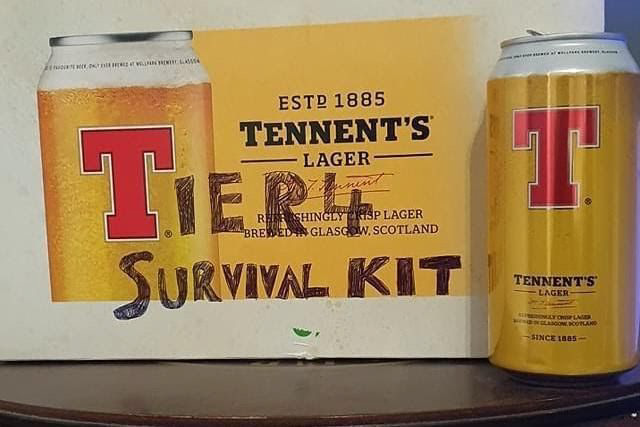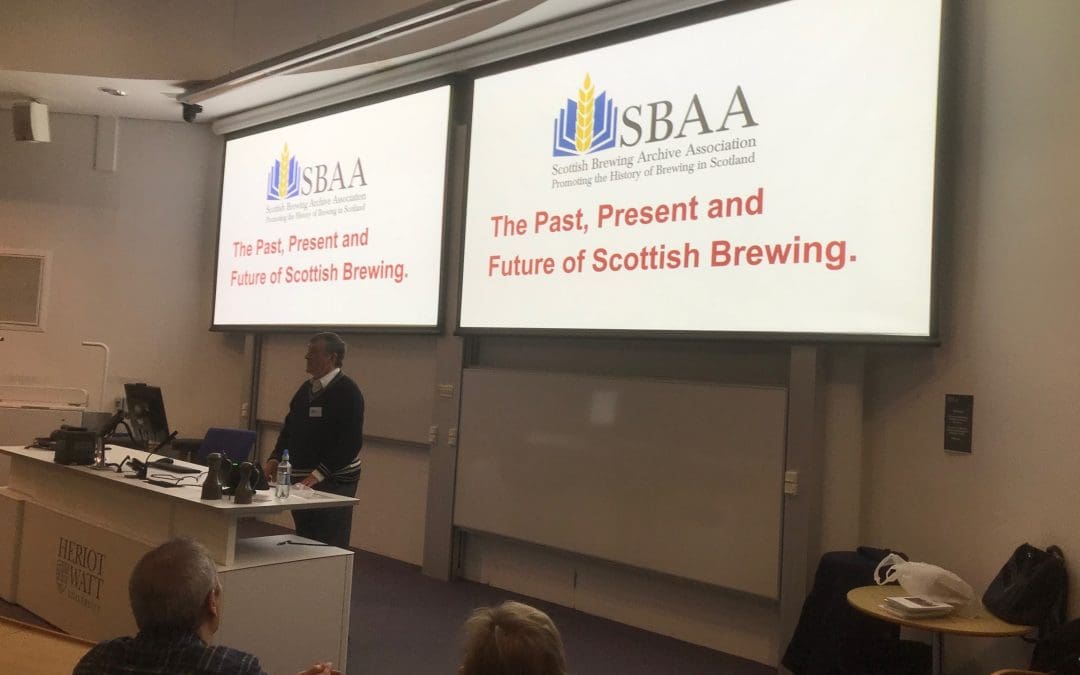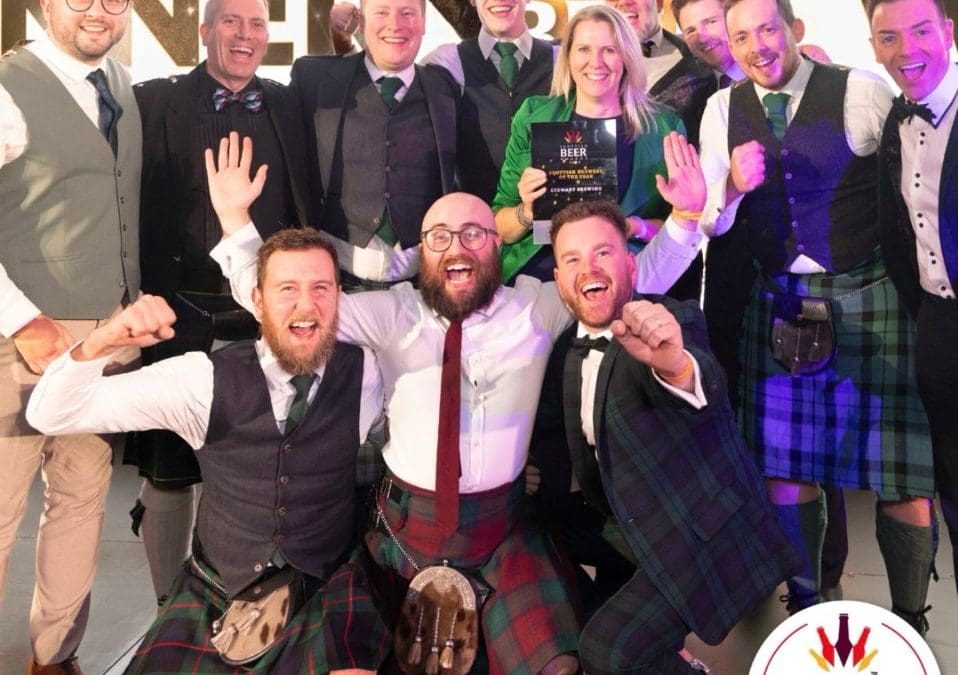1. Chairman’s Statement :

I am sure everyone is pleased that 2020 is now behind us and we all look forward to 2021 with an air of optimism, so let me start by wishing you the very best. Although things look bleak at this moment, I believe this year can only get better with the passing of each day. I took this photo in my garden featuring one of my favourite beers.
The SBAA ended last year by holding its AGM by using Zoom. I must admit I was not sure it would be a success, but was pleasantly surprised with everyone pulling together. Thank you to all members who joined the AGM and for your contributions. Although the SBAA were unable to meet last year due to the restrictions, but hopefully we can do so later this year.
Apart from continuing to issue our Newsletters and the Annual Journal, we also launched our new website. It would be great to hear your views, good, bad or indifferent of all three. After all the SBAA will only survive if everyone gets involved. The SBAA plan to hold a Zoom meeting at the end of February by giving a presentation on the contents of the Scottish Brewing Archive. Ivor our Secretary will provide further information on this in early February and it would be great to have a good attendance.
Take care and keep safe.
John Martin
2. The way we were Part 2 :
A look back into brewing over the last 50 years.

We are indebted to Les Hutcheon who provided the Brewer & Distiller International publication which contains a series of articles, titled “The way we were’ written by Roger Putman. The first article of this series appeared in the October Newsletter 2020.
Fifty years ago the, the brewing industry was dominated by the big seven brewers which controlled 65% of the market. This time Roger examines brewing and I have picked out the main changes during this period.
By the 1970s beer movements in breweries were beginning to be automated and were monitored and controlled by an operator using mimic panels located in the brewery control room. Today mimic panels are now largely suspended by PC monitors.

As a direct result of high volume beer being brewed by many of the larger breweries, they turned to using larger fermenting vessels. It was the rapid rise in lager popularity, which led to conical vessels of two thousand hectolitres in size, (equivalent to 352,000 pints) being installed, as lager took longer to ferment and more time in maturation.
Prior to 1993, Duty payments to Customs & Excise was made at the end of each calendar month and was based on the volume of beer and the specific gravity, when wort was collected at the fermentation stage of the brewing process.
The details of each brew would be meticulously recorded in the brewer’s book, which would then be checked by a Customs & Excise officer at varying times. When paying Duty near the beginning of the brewing process it was important that beer losses were kept to a minimum and monitored on a weekly basis.
This method of Duty payment was changed in 1993 when the cost was calculated based on the volume of beer in package and its ABV%.
Nothing in the brewing process was wasted. After separating the malt from the wort, the spent grains (draff) would be sold as cattle fodder to farmers. Additionally waste yeast was usually dried and sold to Marmite.
Much of this was very labour intensive and by the 1970’s it was automated.

A good example of how draff used to be removed from the mash tun, is shown in the photo.
Due to the intense heat, an operator would only wear shorts and boots and climb into the mash tun and shovel out the spent grains.
In the next Newsletter Roger Putman looks back at packaging.
©Brewer and Distiller International,
3. Another Scotch or two
In the SBAA Journal No.18, Allan McLean had an interesting feature called ‘A Pint of Scotch’, in which he named and illustrated a number of beers with the word ‘Scotch’ in their names and on their labels. Having combed my beer bottle collection, I can now add a few more.
The Caledonian Brewery in Edinburgh produced a ‘Scotch Ale’ in 1998 (330 ml, 7.2% abv). It was also made by Maclay’s Thistle Brewery in Alloa in 1997 (500 ml, 5% abv). Closely related was ‘Scottish Ale’, aka Belhaven’s 70/- (500 ml, 3.5% abv) in 1998, and a slightly stronger version, now just called 70/- (355 ml, 3.9% abv) in 2003. McEwan’s, part of Scottish & Newcastle, did a ‘Scots Ale’ (275 ml, o.g. 1050/1056) back in 1989, its label showing an engraving of the William Younger Abbey Brewery near Holyrood, later to become the head office of the parent company.
Allan McLean demonstrated the surprising fact that a beer does not have to be brewed in Scotland for it to be called ‘Scotch’, by citing the Inverness brand of ‘Scotch Ale’, which was produced by the Continental Brewing Company of Philadelphia, USA. So how about this one ~ I was in Uruguay a couple of years ago, and took a liking to the Mastra beers of Montevideo, which included the roja (meaning ‘red’ in Spanish) at 6.2% abv. On the back label was the subtitle ‘Strong Scotch Ale‘!
A great many Swiss and German brewers settled in South America in the 19th century, establishing cervecaria (breweries), especially in the three southern nations of Argentina, Uruguay, and Chile. The beer was retailed in stoneware bottles, the great majority of which were manufactured by half a dozen potteries in Glasgow. The export quantities of these Scottish bottles may be reckoned in the millions, as revealed by a number of caches, which have come to light in recent times. Despite this strong Scottish link, it should not be assumed that a Scottish brewer went to South America in order to produce ‘Strong Scotch Ale’. A more likely explanation is that drawing a comparison between this style of local beer and the Scottish product, which evidently had a high reputation, would prove to be a promotional asset. All credit, then, to this aspect of Scottish brewing heritage.
The latest version of Scotch Ales is by the Black Isle Brewery at Munlochy in Ross-Shire @ 6.8%ABV, which is currently available in 330ml cans.
Graeme Cruickshank
Footnote: We have significant evidence to support Graeme’s article. No more so that the records of James Marshall who visited South American countries on behalf of J&R Tennent in 1876. Scotch Ales and Stouts were exported and held in high esteem however he noted the influence of German brewers and the growth of lager as a threat to the traditional Scotch ale market.
4. Name the Brewery?

Name this impressive Scottish Brewery?
What was the purpose of the building featured?

|
The October teaser was to identify the brewery in the foreground. Too easy for Michael Clark who immediately identified George Younger’s Candleriggs Brewery in Alloa. We reckon the photo was taken by the late Jimmy Simpson from the “Alloa Tower” c. 1960 with the snow-covered Ochil Hills in the background.
If you have any old photos in your personal collection please send them in , particularly if they haven’t been seen before by a wider audience , the SBAA is your showcase. |
5. The Scottish Beer Awards 2020

The winners of the 5th annual Scottish Beer Awards 2020 was announced at a live virtual event towards the end of last year. The event involved 35 breweries and 314 beers from Scotland. The beers were all blind tasted by a judging panel of over 30 expert tasters.
There were over 25 categories but have listed below the more prestigious winners as follows.
Brewery of the Year – Loch Lomond Brewery
This year they trebled production with a new brewery, managed a detailed rebranding and built relationship with UK and online suppliers.
Brewer of the Year – Craig Scotland – Stewart Brewing
Craig has been with Stewart Brewing for over 7 years and an integral member of the team.
Beer of the Year – Ferry Black – Ferry Brewery
Ferry Brewery won the award for the highest scoring beer in the competition for Ferry Black, its Liquorice Porter with a punchy 8% ABV.
Well done to all winners in a very difficult year.
“The great news is that despite multiple obstacles thrown their way in 2020, many Scottish Breweries, more than just survived, they adapted and innovated.”
6. Tim Dolan Obituary (1939-2020)
Tim was born in Jedburgh and studied chemistry at Edinburgh University. It was during his Honours project that he had his first introduction to the microorganisms that were to shape his career. Tim completed his PhD before joining the Research & Development department of Scottish & Newcastle. He worked on a variety of projects across the Edinburgh sites from the Pilot Brewery at Holyrood to the conversion of cooked maize grits at Fountain Brewery.
After that he took up the post of Deputy Chief Chemist in the research laboratory at Newark with the Associated British Maltsters, who at that time had the largest malting’s in Europe. Tim then took up the role of Assistant Maltings Manager at the Tamdhu Distillery Maltings in Knockando, which was the start of his career in distilling.
His talents were recognised when Prof. Anna MacLeod asked Tim to write about his observations of the distilling process. Over the years Tim’s involvement in distilling was widespread and as a Technical Manager with Highland Distillers, which included visiting eight malt distilleries, one of which was Highland Park Distillery in Orkney. This was the start of his involvement with the Orkney International Science Festival for 25 years.
Tim served on the Institute of Brewing (IoB) for twenty years, and four of these years as Chairman. Tim was also a member of the IoB for 40 years and as Honorary Secretary for 20 years and for many he was the face of the Scottish Section. His contribution to distilling and the industry in general was recognised and was awarded the Horace Brown Medal, for eminent scientific and technological achievement. He was a Fellow of the Royal Society of Chemistry, Fellow of the Royal Society of Biology, Chartered Chemist, Chartered Scientist and Fellow of the Institute of Brewing and Distilling.
Tim was for many, a brewer, maltster, distiller but also a scientist, teacher, mentor, colleague and friend.
Many thanks, goes to Brian Eaton for providing this information.
7. Last Runnings
Many thanks to the members who joined the On-Line Zoom AGM in November – the minutes have been circulated to all members along with how to access the new SBAA website. Feedback welcome.
Brewing Heritage managed to make the script of peak time CORONATION STREET recently. The residents of the street were desperately looking to prevent the demolition of an older building and discovered that it once was a brewery with a “internal heating coil from the original copper”. Not being a regular viewer, I can’t tell you if they were successful!
We would like to welcome new members. Stephen Younger and Graeme Fisher. Hopefully we can all meet up in 2021.
And finally. Someone with a sense of humour posted the photo below on social media.
If you have any “lockdown” photos or stories please send them in.



